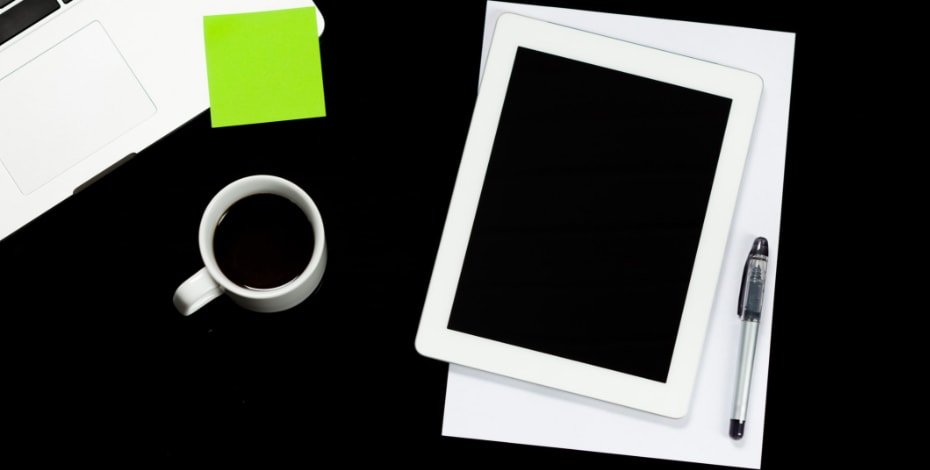
Tablet-based exercise after carpal tunnel release

Exercises using a touchscreen tablet application improved functional ability more than an exercise program prescribed on paper in people after surgical carpal tunnel release. María Dolores Cortés Vega expands on this research.
What is carpal tunnel syndrome?
Carpal tunnel syndrome (CTS) is considered the most common entrapment neuropathy. In CTS, raised pressure in the carpal canal results in median nerve compression and impaired nerve perfusion, leading to discomfort and paraesthesia in the hand.
Are other treatments effective besides surgery?
Yes, conservative treatments are recommended as initial management, whereas surgery is generally recommended in refractory cases.
Is the surgical technique pretty standard?
Yes, the rate of surgical intervention after initial conservative management varies between 57 per cent and 66 per cent. Open decompression under anaesthesia is the standardised surgical technique.
In what ways is it controversial?
It’s controversial because in most cases the methods of post-surgical rehabilitation are based on early immobilisation and different authors have found that after carpal tunnel release, there is no beneficial effect obtained from postoperative immobilisation compared to soft dressing allowing movement. Some studies have reported that early mobilisation results in an improvement in pain and grip and pinch strength, as well as a reduction in the time to return to activities of daily living and work, compared to immobilisation.
'ReHand is a digital solution comprising a tablet app for patients and a monitoring system for healthcare professionals.'
Did both groups in your study receive exercises then?
Yes, both groups received exercise programs. Subjects in the control group were provided with the exercise program on paper, used conventionally in the Andalusian Health Service (Spain), while subjects in the experimental group received this exercise prescription using an innovative digital solution for tablets called ReHand.
Can you explain more about that?
ReHand is a digital solution comprising a tablet app for patients and a monitoring system for healthcare professionals. It is specifically developed for rehabilitation of the main trauma involvements in hand, wrist and fingers, integrating the sensorimotor approach and enabling medical monitoring. Exercise programs incorporated in ReHand are adapted to the patient according to the pathology and recovery phase, and are executed by the patient by touching the touchscreen and guided by visual and auditive feedback. This is one of the main differentiating elements of ReHand compared to the digital solutions that currently exist, which are based on videos and therefore do not enable such a complete and precise sensorimotor approach and patient monitoring.
ReHand has been developed by, and under the supervision of, healthcare professionals such as physiotherapists, surgeons, and occupational therapists, ensuring the included functionalities correspond to the needs of patients and professionals.
Did you see greater improvement in the app group?
Yes. At week four, functional ability improved significantly more in the experimental group than the control group on the 0 to 100 QuickDASH score. However, it was unclear if this effect in functional ability was accompanied by benefits in grip strength, pain or dexterity. This is because; although the mean estimates of effect on the secondary outcome also favoured the experimental group, none reached statistical significance: grip strength (MD 5.6 kilograms, 95% CI–0.5 to 11.7), pain (MD–1.4 cm, 95% CI–2.9 to 0.1), and dexterity (MD–1.3 seconds, 95% CI–3.7 to 1.1).
What was causing the function to be better? Could you determine this from the secondary outcomes?
We strongly believe that it is due to the central involvement entailed by trauma and orthopaedic injuries. CTS is characterised by a cortical reorganisation caused by chronic alteration of peripheral median nerve disorder. This impacts sensorimotor integration and motor performance in patients with CTS, resulting in deficits in dexterous manipulation and finger force distribution control. Those abilities are basic for activities of daily living.
Previous studies have shown that tasks requiring high attention and precision—as the activities implemented by tablet based applications— generate changes at the corticospinal level that reflect an optimisation in the sensorimotor integration between the cortex and the muscle. This is what ReHand is aiming for.
Where to from here with your research?
The research team is already working on the publication of different results of our clinical trials. On the one hand, we have found promising results in other pathologies such as distal radius fracture, which has a high relevance to the public system due to its high incidence and cost. Furthermore, it seems the effect of ReHand is not only limited to the improvement in clinical variables, but also achieves an optimisation in the management of resources dedicated to the pathology by reducing recovery times. This is what we have worked on through a clinical trial with the third leading health insurance company in Spain.
María Dolores Cortés Vega, PhD, is a professor in the physiotherapy department at the Faculty of Nursing, Physiotherapy and Podiatry, University of Seville, Spain. Her research focuses on exercise therapy, virtual reality and inclusive education in higher education. She has collaborated in the creation of a patent related to the optimisation of muscle recruitment.
© Copyright 2024 by Australian Physiotherapy Association. All rights reserved.





